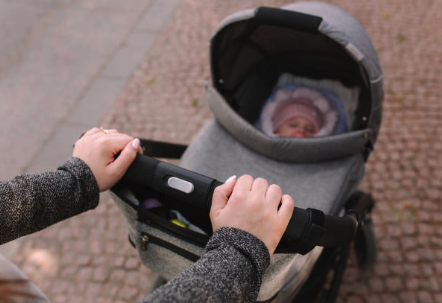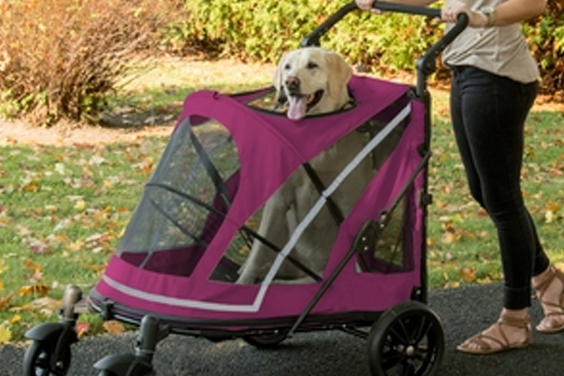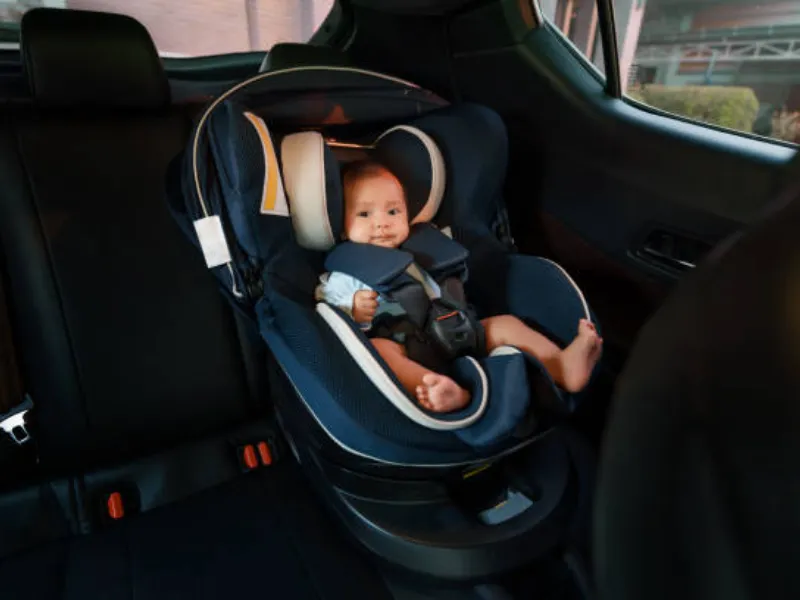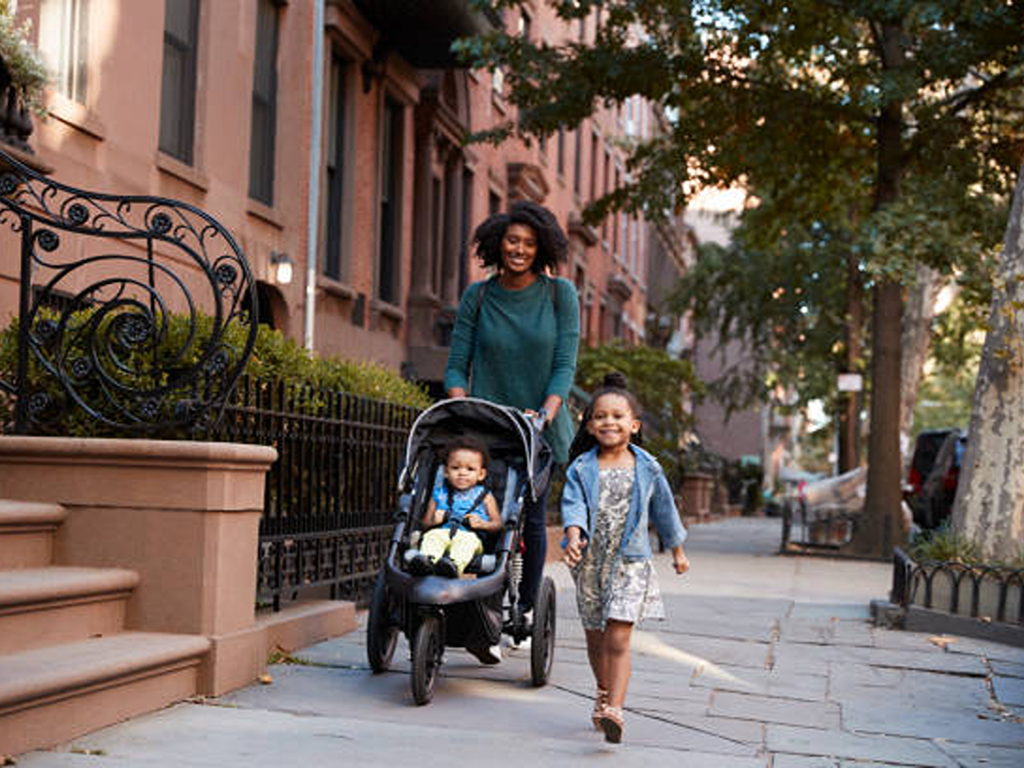As new parents, the joy of taking your little one on their first car ride is immense, but it often comes with a crucial question: How can you ensure their absolute safety on the road? As soon as the newborns learn to sit on their own, they begin to get curious little by little and enjoy new things introduced to them daily. Among such new adventures of life is taking them on a car ride, introducing them to new places like parks, lakesides, homes of dearest relatives, and so on.
To make sure this ride from home to the desired destination is both comfortable and safe, parents switch to car seats rather than holding the baby and hurting them unintentionally. Sudden brakes and jerks can cause these little injuries, and a car seat ensures the little one is not bothered by them. A baby car seat factory takes special care while manufacturing these car seats and includes every necessary safety feature.
Car Seats Go In The Middle

According to experts, the safest spot for a car seat, most preferably in the center of the back seat, is better recognized as the middle seat. There is a list of reasons why the middle is considered the safest position for setting the baby car seat, but the main reason is its distance from the rear passenger seat and the airbags.
Experts suggest that installing car seats at the center is the safest option for toddlers because the chances of injury are the least. A significant study reveals that toddlers between the age of 0 and 3 who were placed in the center car seat had a remarkable 43% fewer chances of sudden injuries caused by jerks, brakes, or accidents compared to those on the side. According to various surveys, toddlers between the age of 0 and 3 who were placed in the center car seat had 43% fewer chances of sudden injuries caused by jerks, brakes, or accidents. Similarly, surveys on road accidents involving toddlers with car seats had 13% more chances of survival. Based on these surveys, experts have declared the center to be the safest spot in cars for car seats. This is primarily because the middle seat offers the greatest distance from all potential points of impact – the sides, front, and rear of the vehicle – creating a critical “crumple zone” around your child in the event of a crash.
Another significant reason behind choosing the middle as the safest spot for an infant car seat can be because it offers a clear reflection in the rearview mirror. When a parent is covering a long distance by road, they can always keep an eye on their babies while driving. Which is why it is safe both for the driver and the baby.
Many parents have suggested how they like their babies to be in the front seat and enjoy the drives more and in case they are needy, they can easily comfort the baby. However, experts do not approve of the front passenger seat being the safest spot for car seat installation, the sole reason being the high risk of injuries. In case of emergencies, a child may suffer fatal injuries because of the airbags. Always remember: if the front passenger airbag cannot be manually deactivated, a child car seat must NEVER be placed in the front seat due to the risk of severe, fatal injury from airbag deployment. Hence, the safest place for a car seat is always the middle seat at the back. If being a parent you wish to begin a baby product business, you can check out baby product wholesale offered by trustworthy manufacturers and suppliers.
Will My Car Fit a Car Seat in the Middle?
While the middle seat offers superior safety, it’s crucial to acknowledge that not all vehicles are designed to accommodate a car seat securely in this position. The primary challenge often lies with the availability and proper spacing of LATCH/ISOFIX anchor points, or the compatibility of the vehicle’s seat belt system with the car seat. Many cars may only have LATCH anchors for the outboard (side) rear seats, leaving the middle seat to rely solely on the vehicle’s seat belt for installation. When using a seat belt, it’s vital to ensure it can be tightened securely without excessive slack and that it provides a tight fit for the car seat. Always consult both your car seat’s instruction manual and your vehicle’s owner’s manual to confirm the recommended installation methods for each seating position. If the car seat cannot be installed securely in the middle with less than one inch of movement at the belt path, then it is NOT the safest spot for your child.
Left and Right Side Seats: When Are They a Better Option?
Though the center rear seat is statistically the safest, the reality for many families is that a side rear seat becomes the best or only viable option due to vehicle design, the need for multiple car seats, or specific family circumstances. If the middle seat in your vehicle cannot accommodate a car seat securely (e.g., due to lack of LATCH anchors, an unusually shaped seat, or inability to achieve a tight seat belt installation), then either the rear passenger side or the rear driver side become the next safest alternatives. Both rear side seats are significantly safer than the front passenger seat.
Parents often prefer the passenger side (behind the front passenger seat) for practical reasons. This position allows for easier curbside loading and unloading, keeping the child away from active traffic. It can also be more convenient for the front passenger to assist the child if needed. Conversely, the driver’s side might be chosen for balance if another child is on the passenger side, or simply based on the specific vehicle’s design and ease of access. Regardless of which rear side seat you choose, the most critical factor is ensuring the car seat is installed correctly and securely, adhering to both the car seat manufacturer’s instructions and your vehicle’s owner’s manual. A properly installed car seat in a side rear position is always safer than a poorly installed one in the center.
Beyond Position: Correct Installation Is Paramount
While finding the “safest spot” is a crucial first step, it’s an undeniable truth that even the statistically safest position provides no protection if the car seat isn’t installed correctly. Experts consistently emphasize that the vast majority of car seat safety issues stem from improper installation, not the choice of seating position (assuming it’s in the back seat).
Common installation mistakes include: the car seat being too loose (moving more than one inch at the belt path), harness straps being too loose or twisted, the chest clip being in the wrong position (too low or too high), and an incorrect recline angle for rear-facing infants. Each of these seemingly minor errors can severely compromise the car seat’s effectiveness in a crash, leading to increased risk of injury. It’s imperative that parents perform the “Inch Test” (ensuring the car seat moves no more than one inch side-to-side or front-to-back at the belt path) and the “Pinch Test” (ensuring no slack can be pinched at the child’s shoulder harness). Always refer to your car seat’s instruction manual for precise installation steps, specific LATCH/ISOFIX requirements, and proper use of the vehicle’s seat belt system. When in doubt, seeking assistance from a certified Child Passenger Safety Technician (CPST) is highly recommended; their expertise can provide invaluable peace of mind and ensure your child is as safe as possible.
Safest Spot For Car Seat FAQ
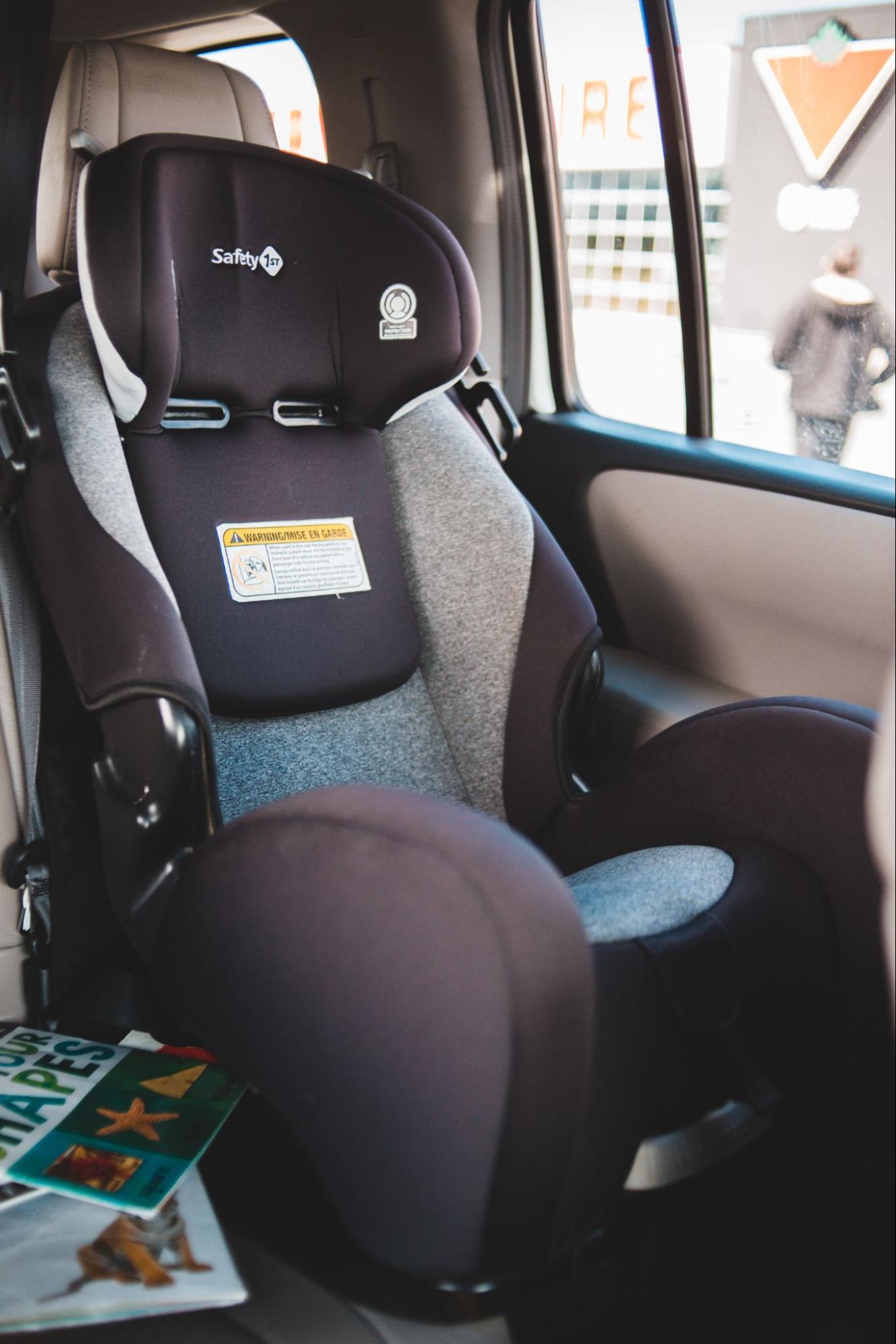
Becoming a new parent or planning to have a baby sooner is the happiest pleasure of life, but with babies comes loads of responsibilities and, of course, worries. When traveling with a toddler for the first time parents do not want to miss any safety measures. Many questions are brimming their minds, especially if it is long-distance travel by car. The most common concern or question asked by most new parents is where is the safest place to put a car seat? Or what are the things to keep in mind while choosing a position and setting the seat? Some of the most common frequently asked questions can help all parents get rid of their worries and decide what is best for them.
Why Is The Middle The Safest Spot And Not The Front Passenger Seat?
Even if some parents love the idea of their infants sitting comfortably next to them in the front passenger seat, is it a good idea? According to experts, the safest place for an infant car seat is the center or the middle position.
In the case of emergencies, it has been evident that the front passenger seats are most prone to fatal injuries, which is why the middle seat is regarded as comparatively safe. It is the safest place for car seat in the back seat, ensuring the infant has fewer injuries that can be caused even by sudden brakes.
Other than these reasons mentioned above, experts say that the middle seat offers more comfort than the front and rear seats, and it helps infants feel more relaxed. Not just security and relaxation, the central position also enables the parent driving a car to keep an eye on every move and action of their babies even when driving with full concentration. The idea of comforting the baby in the front seat while driving is never safe; it can also sometimes be very distractive. Therefore, the safest position for a car seat is said to be in the middle seat.
Can Parents Consider Rear Passenger Seats?
While the middle seat is optimal, many vehicles may not accommodate a secure middle installation due to car seat width, vehicle design, or lack of proper LATCH anchors/seatbelt routing. In such cases, the rear passenger side or driver side are the next safest options. Even if it is not a bad idea to set the car seat on the front passenger seat, especially if the baby cries when parents are not around, it cannot be considered the safest spot. Sometimes, when a single parent has to drive with an infant, it becomes very challenging to comfort the baby and drive simultaneously; in such cases, a front passenger is a great option. But it is not suggested for long-distance drives because it involves many risks.
Although the rear passenger seat gives easy access to parents to look after their infants, it is a red flag to experts because it is very close to the positioning of airbags. In case of emergencies, a punch of an airbag can sometimes be similar to hitting the face on the concrete. Therefore, it is not the best position. However, compared to the front seat, both rear side seats are significantly safer. The passenger side (behind the front passenger) is often preferred by parents for ease of curbside loading and unloading, keeping the child away from traffic. Regardless of which side you choose, the most critical factor is ensuring the car seat is installed correctly and securely.
Understanding Car Seat Types: Rear-Facing, Forward-Facing, and Booster Seats
The type of car seat your child needs depends on their age, weight, and height. Each type has specific installation considerations for optimal safety:
- Newborns/Infants (Rear-Facing Car Seats):
- Newborns can and should use car seats from birth, provided they meet the minimum weight and height requirements of the specific car seat model. The statement that “Until an infant has learned to sit on its own, car seats can injure them in many ways” is inaccurate; proper infant car seats are designed to safely transport newborns.
- Rear-facing is the safest position for infants and toddlers because it supports their head, neck, and spine, distributing crash forces over the strongest parts of their body.
- Always follow your car seat’s instruction manual for the correct recline angle, which is crucial for a newborn’s airway safety (often around 45 degrees). Many car seats have built-in level indicators.
- Toddlers/Preschoolers (Forward-Facing Car Seats):
- Children should remain rear-facing for as long as possible, until they reach the maximum weight or height limit of their convertible car seat in the rear-facing position, as specified by the manufacturer. This is typically well beyond their first birthday.
- Once forward-facing, the middle back seat remains the safest option.
- Older Children (Booster Seats):
- Booster seats are designed for older children who have outgrown their forward-facing car seats but are not yet tall enough to safely use the vehicle’s seat belt alone (typically until around 8-12 years old, or at least 4 feet 9 inches tall).
- Booster seats should also always be used in the back seat. They elevate the child so the vehicle’s lap and shoulder belt fit correctly across their strong bones (lap belt across the hips, shoulder belt across the collarbone).
Car Seat Types: A Quick Guide
| Car Seat Type | Age/Stage | Key Safety Points |
| Rear-Facing | Newborns/Infants/Toddlers (From birth until they reach the maximum weight or height limit of the seat in the rear-facing position, often well beyond their first birthday). | Safest position; supports head, neck, and spine; distributes crash forces; crucial to check the recline angle for newborns. |
| Forward-Facing | Toddlers/Preschoolers (After outgrowing their rear-facing seat’s limits, typically after 1 year old). | The middle back seat is generally the safest option. |
| Booster Seats | Older Children (When they’ve outgrown their forward-facing car seat but are not yet tall enough to safely use the vehicle’s seat belt alone, typically until around 8-12 years old, or at least 4 feet 9 inches tall / 145 cm). | Always used in the back seat; elevates the child so the vehicle’s lap and shoulder belt fit correctly (lap belt across hips, shoulder belt across collarbone). |
What To Do When Two Or More Car Seats Are To Be Installed?
Parents with two or more kids find it very hard to position car seats for them, only the middle cannot be the safest place for a car seat. And the biggest confusion they come across is which baby to put in the center and why, how to adjust two car seats at the center, and so on.
When two or three convertible car seats are needed to be installed, experts suggest that the forward-facing child should be at the center while the rear-facing children could be on either side. The logic behind the suggestion is that a rear-facing child is considered in a much safer position than a forward-facing child.
Here are some strategies for installing multiple car seats:
- Prioritize the youngest/smallest child (who is rear-facing) for the safest middle position, if feasible. This is because rear-facing children are inherently in a safer position in a crash.
- If the middle position cannot accommodate a rear-facing seat, ensure all seats are installed correctly and tightly in the available back seats (driver side or passenger side).
- Consult your vehicle owner’s manual and car seat manuals: These will provide crucial information on which seating positions support car seat installation, especially regarding LATCH/ISOFIX anchor points and seatbelt compatibility. Avoid “borrowing” lower LATCH anchors from adjacent seating positions unless explicitly permitted by your vehicle manufacturer.
- Consider car seat width: Some car seat models are narrower, making it easier to fit multiple seats across the back.
- If you have more than one child, you might have to place one car seat behind the driver and another behind the passenger, or even consider a larger vehicle if current space is insufficient for safe installation.
Is The Front Passenger Seat A Better Option Than The Rear Passenger?
Until a child has attained 12 years of age, experts do not suggest sitting on the front passenger seat, which is why sticking to the rear seat is better. In case of emergencies, when the parent is driving alone and has no option but to place car seats on the front passenger seat, there are quite a few things to keep in mind:
- Car seats have lap belts and other necessary latches to protect the baby from sudden jerks.
- The airbag feature is deactivated because it can prove to be life-threatening.
- Always confirm that the vehicle’s airbag system for the front passenger seat can be completely deactivated if a car seat must be placed there. Even then, this should only be a last resort.
Toddlers Of What Age Can Sit Comfortably In A Car Seat?
Usually, toddlers between 6 months to 3 years old can sit comfortably in a regular car seat. As they grow older, they require bigger seats to sit comfortably. Until an infant has learned to sit on its own, car seats can injure them in many ways. Therefore, unless the baby is comfortable sitting on its own, installing car seats is not a good option.
It’s crucial to understand that car seat usage is primarily based on a child’s weight and height, not just age or the ability to sit up independently.
- Infants (newborns) can typically use an infant car seat from birth, as long as they meet the seat’s minimum weight and height requirements (often starting from 4 lbs). These seats are designed to support newborns who cannot sit up.
- Children should remain in a rear-facing car seat for as long as possible, up to the maximum weight or height allowed by their car seat manufacturer. This often means well past their first birthday, and even into their third or fourth year.
- Forward-facing car seats are for toddlers who have outgrown the rear-facing limits.
- Booster seats are for older children (usually 8-12 years old, or until 4 feet 9 inches tall) who have outgrown forward-facing seats but aren’t ready for just a seat belt.
- In Japan, the law mandates car seat use for children under 6 years old. While there is no fine for non-compliance, it results in a 1-point deduction from your driving record. However, for optimal safety, experts recommend children use a car seat or booster seat until they are 10-12 years old, or can pass the “5-step test” for proper seat belt fit.
What Mistakes Should Parents Avoid During Car Seat Installation?
There are many common mistakes that parents often commit unknowingly while purchasing and installing car seats. Every car is built; differently; the seats’ sizes and positions are different, so finding the safest spot and installing car seats accordingly is significant. Whether the confusion is with finding the safest place for rear-facing car seat or what to do if there is no lap belt in the middle, there are many factors to keep in mind. Parents must be cautious about these things:
- Not knowing the right spot and making the biggest mistake of placing the car seat in a spot that is not the safest.
- Failing to pay attention to whether car seats have been installed properly.
- Not paying attention if the middle seat has a lap belt for extra safety.
- Tying safety latches too tightly can suffocate the baby.
- Buying a used car seat because it seemed affordable, but deep down, it may have defects and increase many risk factors.
- Reclining the baby at the wrong angle.
| Common Mistakes | Description | How to Avoid / Solution |
| Not knowing the right spot for car seat | Parents often place the car seat in a spot that is not the safest. | Always prioritize the middle back seat; if not feasible, choose a side where a secure installation can be achieved. Consult your car’s owner manual. |
| Failing to ensure proper installation | Parents may not pay enough attention to whether car seats have been installed properly. | Perform the “Inch Test”: Once installed, the car seat should not move more than one inch (2.5 cm) side-to-side or front-to-back at the belt path. If using LATCH, ensure both lower anchors are properly connected. |
| Ignoring the middle seat’s lap belt | Parents may not check if the middle seat has a lap belt for extra safety. | For seatbelt installations, ensure the lap belt is threaded correctly and tightly across the car seat’s belt path. If your vehicle’s seat belt system has a “locking mode” (where you pull the belt all the way out to lock it), use it. |
| Tying safety latches too tightly | Tying safety latches too tightly can suffocate the baby. | The harness straps should be snug against your child’s body, with no slack. You should not be able to pinch any excess webbing at their shoulder. However, it should not be so tight as to cause discomfort or leave red marks. |
| Buying a used car seat | Buying a used car seat may seem affordable, but it may have defects and increase many risk factors. | Avoid used car seats unless you know its full history (no crashes, not expired, all parts included). Car seats have an expiration date (typically 6-10 years from manufacturing) due to material degradation, which should always be checked. |
| Reclining the baby at the wrong angle | Parents may recline the baby at an incorrect angle, which can be unsafe. | Always follow the car seat manufacturer’s instructions for the correct recline angle, especially for rear-facing infants to ensure their airway remains open. Many car seats have built-in level indicators. |
| Twisted straps/harness | Harness straps are twisted and do not lie flat on the child. | Ensure all harness straps and the chest clip lie flat against your child’s body. Twisted straps can reduce the effectiveness of the car seat in a crash. |
What If The Car Only Has Two Back Seats? Is There A Need To Buy A New Car?
When a car is relatively small and does not have a middle seat, parents are very concerned about how and where to find the safest spot and install a car seat. But, even if there is no middle seat, there is no need to buy a brand-new car because the back seat’s middle spot will work the same. In such a scenario, the front passenger seat must be very close to the forward-facing infant car seat; hence, it is suggested to keep the baby rear-facing for enhanced safety and comfort. You can also choose a booster seat for more security and convenience.
Conclusion
When looking for a top-quality baby car seat, what matters the most is the easy installation and converting car seats back to strollers efficiently. It is only a trusted manufacturing company that takes care of the most minor features and guarantees safety and comfort. For infants, car rides can be their favorite adventure, and to make that moment the safest, companies manufacture car seats with latches, lap belts, and so on.
As parents, it is a big responsibility to choose what is best for their babies. Similarly, for starting a baby products business that focuses on car seats, you need trustworthy manufacturers. If you wish to purchase car seats of uncompromising quality at wholesale, contact us here.
